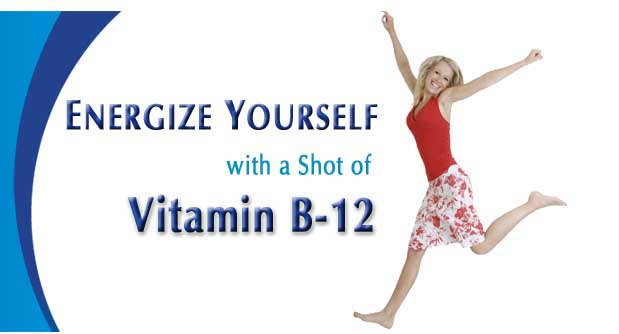Vitamin B12: Do you need an Energy Boost?
What is it? Vitamin B12 is a water-soluble nutrient found in animal proteins and fortified grains. It plays a crucial role in nerve function, red blood cell production, energy, metabolism, immunity and DNA synthesis. Similar to iron-deficiency, vitamin B12 deficiency is a form of “anemia” in which red blood cells are less capable of carrying oxygen to the cells. People with B12 deficiencies often feel fatigued as a result and supplementing can help to increase energy.
How do I know if my B12 is low? Signs of vitamin B12 deficiency typically happen when blood levels are below: 500 pmol/L and can include fatigue, weakness, numbness or tingling sensations in the hands and feet, loss of balance, lack of concentration, poor memory and depression.
How do I increase my levels? Beef liver and clams have the highest levels of Vitamin B12 but it can also be found in eggs, fish, poultry, and nutritional yeast. For those with more severe deficiencies it’s best to use sublingual methylcobalamin in at least a 1000mcg/day dose. Methylcobalamin is the most bioavailable (easy to absorb) form of vitamin B12 and the sublingual format allows it to be absorbed straight into the blood vessels under the tongue. For those with issues in the stomach or small intestine, this can also affect B12 absorption making the sublingual format preferable.

What about injections? A vitamin B12 injection is the quickest way to increase blood levels of B12. This is a safe procedure which involves a sterilized intramuscular needle filled with vitamin B12, typically inserted into the deltoid (shoulder) and delivers the vitamin straight into the muscle, which then diffuses directly into the blood. As vitamin B12 is water-soluble, your body will use whatever it needs and excrete the rest. B12 injections can be a quick way to boost energy, increase concentration, calm the nerves and ward off infections. After receiving a vitamin B12 injection, most people will notice an immediate increase in their energy, concentration, and mood within 24 hours to a week following the shot.
Wondering if vitamin B12 supplementation would be helpful for you? Ask Dr Rodwin!
Post-Race Recovery
Every finish line is also a start line, for recovery that is, and for your preparations for the next race. What you do in the minutes, hours, and days after completing any race will determine just how quickly you get your legs back and return to regular training. Doing the right things will make racing minimally disruptive to your overall training program, whereas doing the wrong things could spoil your next race by setting back your training or even by resulting in illness or injury. Two recommended post- race treatments are Massage Therapy and Chiropractic.

Massage Therapy: Sports massage has long been the go-to therapy for runners seeking relief from aches and pains. A massage can improve flexibility, boost blood flow, and release tension, helping runners recover from or sidestep injury. Recovery is the other major benefit of massage. Massage can reduce pain and the intensity of muscle soreness after a grueling workout or race. Studies indicate that massage can reduce inflammation, improve immune function, and reduce stress hormones like cortisol. While massage won’t clear lactic acid or any other waste products from your muscles, it will promote more circulation to your muscles. Better circulation is what will aid your recovery.
Chiropractic: When you are training for any type of race, recovery is a crucial component. The faster your body is able to recover, the sooner you will be able to get back out there and push your body to the limit. Chiropractic is a key component in the recovery process of your body between workouts and races. If your body is structurally out of alignment, it can be very detrimental, not only slowing down the recovery process, but also creating excessive damage during a typical training session or race. Proper alignment of the body alone will give proper balance through the body. Proper balance allows all of the muscles and joints to function the way they were designed to, which directly decreases the stress that is placed on these structures. This will decrease injuries directly. When a body is in its intended alignment, there is much less occurrence of injury because everything is functioning the way that it is intended. You cannot run at your best level if your body’s mechanics are compromised. Dr. Barbara Rodwin can treat and prevent misalignments in the feet, knees, hips, lower back, neck, shoulders, elbows and wrists aiding in restoring motion.
When is the best time to seek out Massage Therapy and/or Chiropractic? Your timing of Massage Therapy as a post- race treatment depends on the length and intensity of your race, whereas a chiropractic appointment is recommended soon after a race.
Questions? Ask one of our Registered Massage Therapists or Dr. Barbara Rodwin
When to Run Again
How quickly you return to normal training depends on the length of the race you’ve just completed, your fitness level, and when you plan to race next. Here are guidelines to consider when planning your return to training:
After shorter races (up to 10K): You can do your next hard run within as few as three days, if you’re a high-mileage runner. Otherwise, wait about five days.
After a 10K or half-marathon: Fitter runners can go long or fast again after four or five days. More casual runners should wait at least a full week.
After a marathon: All runners wishing to maintain a high level of fitness should do little or no running for four to seven days, followed by a week of only low-intensity running. Then you can return to your normal regimen.
Cross-training is a great way to maintain fitness without slowing the recovery process in the first few days after a longer race. Walking, swimming, cycling, and inline skating are all good choices, as long as you keep the intensity low.



